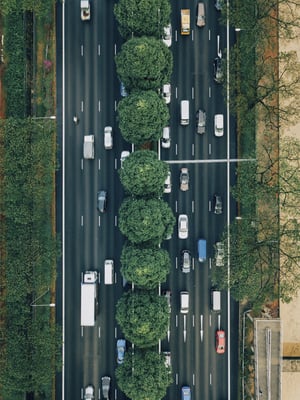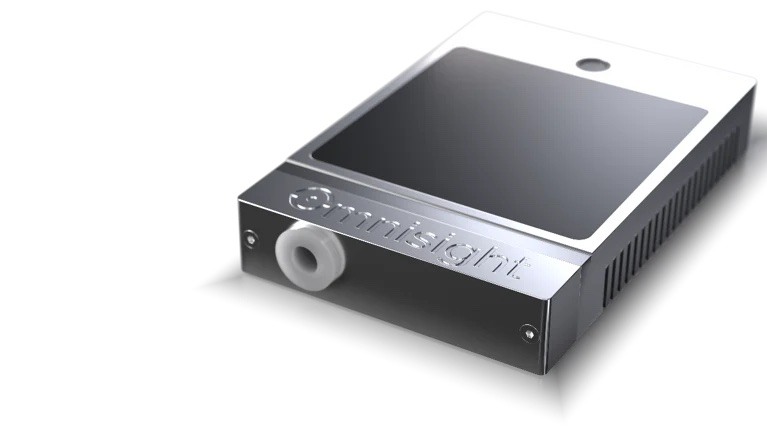.png?width=300&name=image%20(6).png)
Universities & College Campuses
Optimize Traffic on Campus Grounds With Omnisight
College campuses aren’t just learning centers—they’re bustling movement ecosystems. At any given time, you find pedestrians, cyclists, scooter riders, buses, cars, and service vehicles all sharing the same limited space. This constant mix creates unique and often unpredictable road safety challenges.
Pedestrians—students, faculty, staff, and visitors—make up the largest and most vulnerable group. They move between classes, residence halls, and campus facilities throughout the day and night, often navigating poorly marked crossings or congested roads.
Whether on foot or behind the wheel, every road user on campus deserves a safe, reliable environment. Data-driven solutions like the Omnisight FusionSensor offer real-time insights that help universities reduce risk, improve response times, and make smarter safety decisions.

College Campus Traffic Problems in Statistics
Although generally perceived as safer environments than other urban areas, pedestrian safety on college campuses in the United States presents numerous challenges.
For instance, the Santa Clara University in California reported 37 incidents in 2024, resulting in 6 injuries and one death, despite many students complaining of the lack of marked crosswalks.
From 2017 to 2020, the University of Austin in Texas reported 2,434 crashes, including 100 incidents involving bicyclists, 79 involving pedestrians, and 4 fatalities overall. Among the bicycle and pedestrian-involved incidents, 42 involved signal lights, 38 featured marked lanes, and 21 took place at stop-sign intersections.
These incidents demonstrate that passive enforcement methods, like traditional traffic signals, are widely ignored and aren’t enough to prevent injuries.
Most Common Risk Factors of Campus Traffic Safety
Protecting students starts with understanding the risks they face. These are the most common risks affecting pedestrians and vehicle users on college campuses:
High pedestrian density.
University campuses experience high volumes of foot traffic alongside vehicle movement. Accidents are most likely to occur in areas where both are at their peak.
Diverse mix of vehicles.
Campuses aren’t just crowded with pedestrians—they’re shared by bikes, scooters, buses, and service vehicles. When vulnerable users like walkers and cyclists aren’t separated from cars and trucks, the risk of accidents increases.
Distracted behaviors.
More than one in three campus pedestrians cross the street while distracted—often by phones or headphones—according to a 2018 National Library of Medicine study. These distractions make them less likely to notice traffic, increasing the risk of being hit by a vehicle.

Improper road design.
Outdated or underfunded campuses often lack the infrastructure to support current traffic levels. Poor road design, unclear markings, and limited visibility can make it harder for drivers and pedestrians to react safely.
Accident underreporting.
Although traffic rules, signals, and posted speed limits apply on campus grounds, accidents are often underreported. Without accurate data, risks are harder to detect, and campuses may seem safer than they are.
How the Omnisight FusionSensor Supports Pedestrian Safety on College Campuses
Preventing pedestrian accidents on campus requires reliable data and fast action. The Omnisight FusionSensor delivers both through a compact, multi-technology solution for transportation departments.
Pedestrian detection.
The FusionSensor uses AI-powered video and HD3D radar to detect road users with high precision, down to a human heartbeat. It accurately differentiates between pedestrians, cyclists, and vehicles, helping campus officials monitor traffic flow and assess safety risks.
Sensor data to adaptive signals.
Connected to adaptive traffic timing systems, the sensor adjusts signal timing in response to real-time crowd and vehicle movement, improving crosswalk safety and reducing crash risk.
Automatic alerts.
When deployed on campuses, the sensor delivers instant alerts for crashes and traffic incidents, even without eyewitnesses. Integrated with a smart city infrastructure system, it can notify law enforcement directly to speed up response and reduce underreporting.

Pain point detection.
If one part of campus sees more accidents than others, the system identifies the problem area and provides actionable insights. This helps officials target zones that may need upgrades or redesigns.
Long-term data collection.
The system collects long-term traffic and incident data to help campuses analyze trends, identify risk hotspots, and create informed safety strategies.
Protect Student Lives With Omnisight
Omnisight’s FusionSensor uses data fusion technology—combining radar and AI-enabled video—to detect and interpret real-time traffic incidents. With TrueEdge processing, all data is analyzed directly on the device and sent in a human-readable format.
Because it doesn’t require a data center or complex infrastructure, the sensor is an ideal fit for colleges and universities of all sizes and budgets looking to enhancecampus traffic safety.
Let’s work together to make your campus safer and ready for the next generation of students. Contact our team to discuss how Omnisight can help you reduce pedestrian traffic incidents on a college campus.
